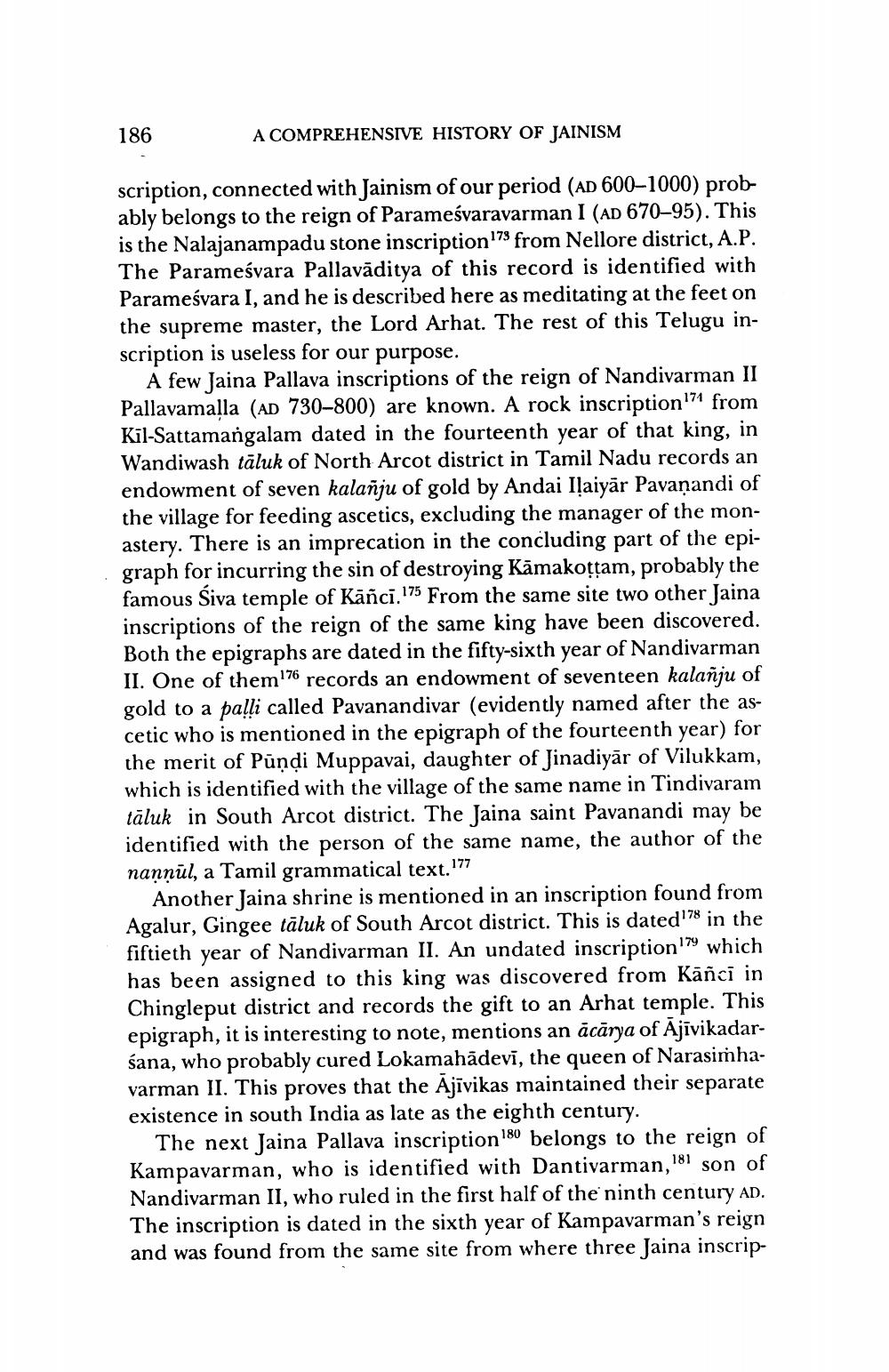________________
186
A COMPREHENSIVE HISTORY OF JAINISM
scription, connected with Jainism of our period (AD 600–1000) probably belongs to the reign of Parameśvaravarman I (AD 670–95). This is the Nalajanampadu stone inscription 173 from Nellore district, A.P. The Parameśvara Pallavāditya of this record is identified with Parameśvara I, and he is described here as meditating at the feet on the supreme master, the Lord Arhat. The rest of this Telugu inscription is useless for our purpose.
A few Jaina Pallava inscriptions of the reign of Nandivarman II Pallavamalla (AD 730–800) are known. A rock inscription 174 from Kil-Sattamangalam dated in the fourteenth year of that king, in Wandiwash taluk of North Arcot district in Tamil Nadu records an endowment of seven kalanju of gold by Andai Ilaiyar Pavanandi of the village for feeding ascetics, excluding the manager of the monastery. There is an imprecation in the concluding part of the epigraph for incurring the sin of destroying Kāmakottam, probably the famous Siva temple of Kancī.175 From the same site two other Jaina inscriptions of the reign of the same king have been discovered. Both the epigraphs are dated in the fifty-sixth year of Nandivarman II. One of them 176 records an endowment of seventeen kalañju of gold to a palli called Pavanandivar (evidently named after the ascetic who is mentioned in the epigraph of the fourteenth year) for the merit of Pundi Muppavai, daughter of Jinadiyār of Vilukkam, which is identified with the village of the same name in Tindivaram täluk in South Arcot district. The Jaina saint Pavanandi may be identified with the person of the same name, the author of the nannul, a Tamil grammatical text. 177
Another Jaina shrine is mentioned in an inscription found from Agalur, Gingee tāluk of South Arcot district. This is dated 178 in the fiftieth year of Nandivarman II. An undated inscription 179 which has been assigned to this king was discovered from Kāñci in Chingleput district and records the gift to an Arhat temple. This epigraph, it is interesting to note, mentions an ācārya of Ajīvikadarsana, who probably cured Lokamahādevī, the queen of Narasimha varman II. This proves that the Ajīvikas maintained their separate existence in south India as late as the eighth century.
The next Jaina Pallava inscription 180 belongs to the reign of Kampavarman, who is identified with Dantivarman, 181 son of Nandivarman II, who ruled in the first half of the ninth century AD. The inscription is dated in the sixth year of Kampavarman's reign and was found from the same site from where three Jaina inscrip




